Kayaking has redefined the way we look at a map. We still care where the mountains and green spaces are, but we pay special attention to bodies of water: rivers, lakes, and especially oceans. If there’s an opportunity to paddle, we try not to miss it.
As an added benefit, bodies of water often include communities of paddlers. Wherever we go, we’re generally able to find people who are happy to paddle with us. Exploring unfamiliar waters with people who know them well is one of the great pleasures of traveling.
We just returned from San Francisco, where we spent two days on the water with some of the instructors from California Canoe & Kayak. CCK Program Director Sean Morley invited us to tag along as the staff participated in workshops on rock gardening, stroke refinement, rescues and navigation. We chose the rock gardening session, since that’s an activity we don’t have opportunities to do much on our own home waters.
For those who are unfamiliar with rock gardening, it involves maneuvering in, around and sometimes over rocks and other features. It may include poking into caves, paddling under arches, catching pour-overs, and threading through rocks and boulders. It requires timing, control, confidence and, ideally, a plastic boat. Depending on the size and period of the swell, a spot that is fun one day may be hazardous the next.
We were fortunate to venture out with experienced rock gardeners who are familiar with the area, including Bill Vonnegut and Lily Kelsey, both Neptune’s Rangers as well as CCK instructors, and Bryant Burkhardt, ACA Instructor Trainer and all-around paddling enthusiast. With them and the other welcoming CCK instructors, we paddled under the Golden Gate Bridge and explored the features along the scenic coast of the Marin Headlands.
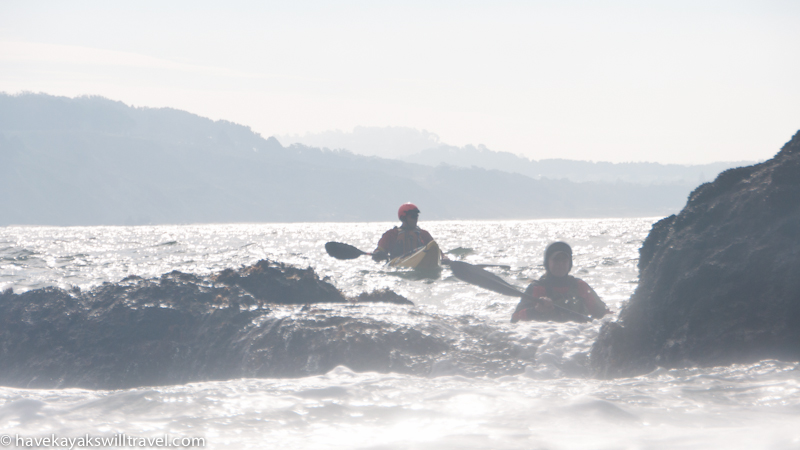
The next day, there was nothing to see. Fog blanketed the entire Bay. We could barely see the seawall on the south side of Horseshoe Cove. If someone had removed the Golden Gate Bridge and the entire city of San Francisco, we wouldn’t have known.
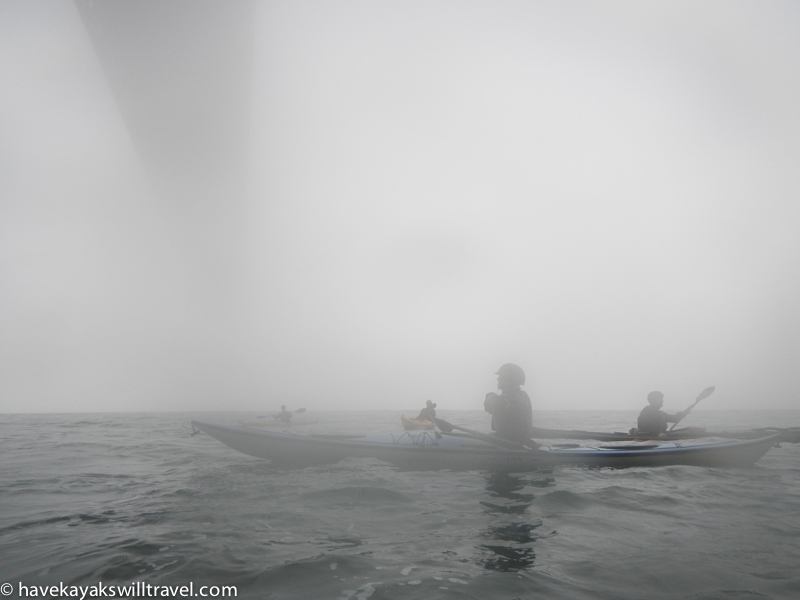
The fog was so thick, we could barely see any of the Golden Gate Bridge, even when we were directly under it.
Paddling in fog is much like flying through clouds. It’s hard to discern how fast you’re going and nearly impossible to tell what’s around you. One minute you feel alone on the ocean, and the next you’ve come upon a creepy-cool yacht named the Galeocerdo anchored off the Sausalito seawall ($33 million, according to one source, in case you’re wondering). But you should know where you are through a combination of chart, compass, watch and tide tables. Again, we were fortunate to be paddling with new friends who knew these waters well–Bryant and Lindsay Burkhardt–as well as our longtime friend Chris Hoffman, who recently moved to this area. Together we paddled out to Angel Island, now a state park, but once the “Ellis Island of the West.”
How strange to eat our sandwiches on shores where, a century earlier, hopes and dreams were often dashed on the rocks. We later read about this island’s role in ensuring that the Chinese Exclusion Act was successfully administered, keeping desperate immigrants from settling in the United States. Like much of the coast, this island also played a military role; it was once the site of a military base and a Nike Missile site. And like Alcatraz, it was considered impossible to escape. But here we were, munching on almonds and appreciating the natural beauty of the area.
We paddled back in time to enjoy the tide race and–finally!–some clear skies at Yellow Bluff before returning our borrowed boats and heading over to the Presidio Yacht Club for a few drinks with our new friends.
Often, when we think of community, we focus on the people we spend the most time with: our co-workers, our neighbors, or the people we see daily or weekly because we are engaged in activities we value together. Paddling creates an international community that defies distance and infrequency. Every time we paddle in a new place, we establish new friendships and strengthen old ones, and we’re reminded how much paddlers have in common simply because we are attracted to a human-powered, water-based sport. And we are grateful.


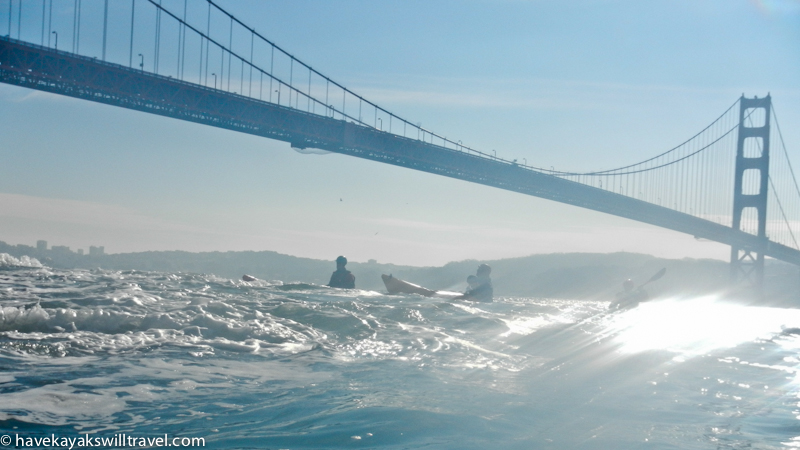


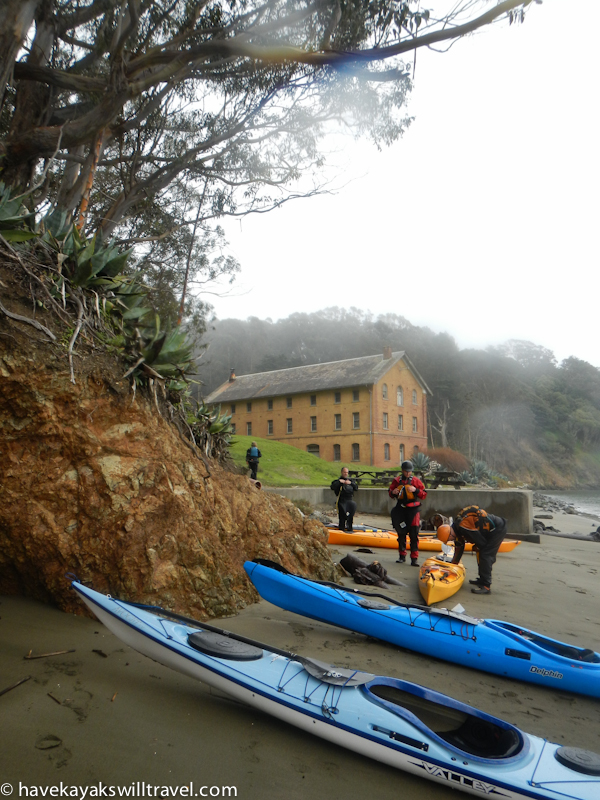
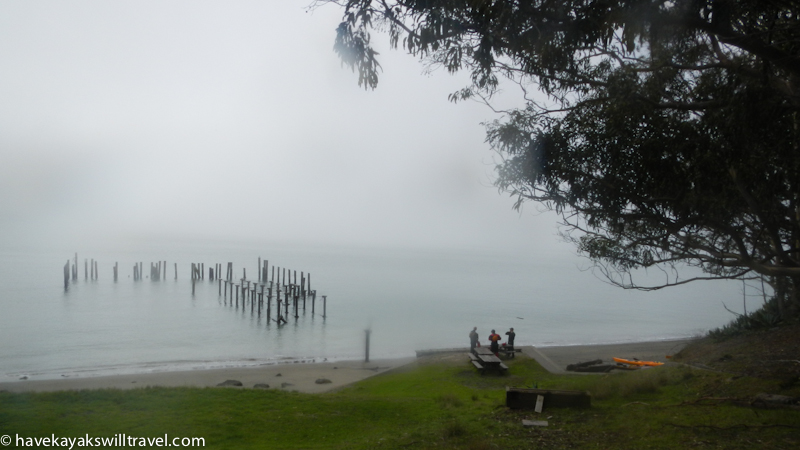
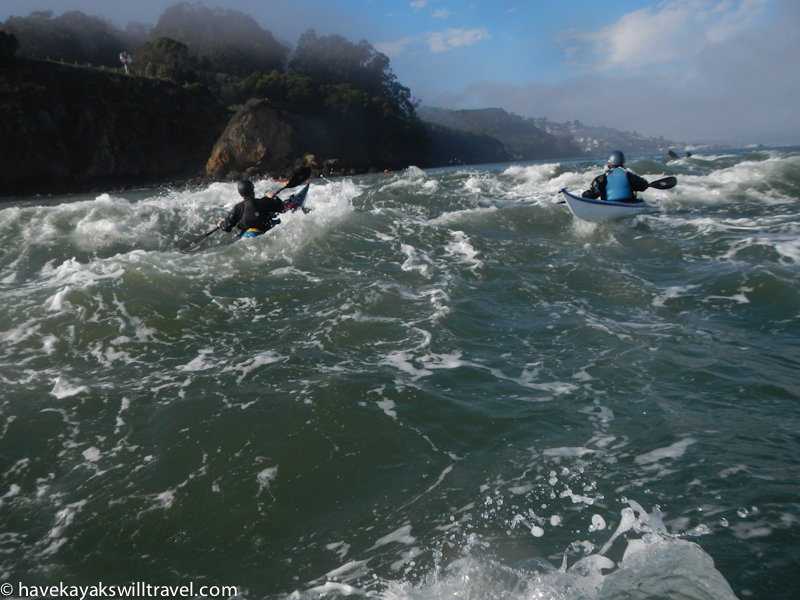
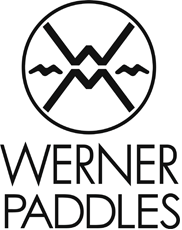
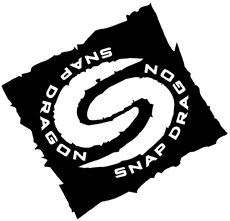




I like your emphasis on community. That’s one of the things I really like about kayaking.
So do we, Lenore!